Aphids descend on prized flowers, fruits, and veggies, breeding so quickly an infestation can quickly take hold. Once aphids are sucking the life sap from your plants, is there a chemical-free way to be rid of them? Yes! Here are 12 methods for getting rid of aphids naturally.

What Is an Aphid?
Aphids are sap-sucking, soft-bodied insects in the Aphidoidea family. Depending on the species, an aphid reaches 1/16 to a quarter inch long. There are actually over 5,000 different types of aphids in the world, but the ones you’ll most likely spot on your roses, tomatoes, and young, fleshy plants are greenflies, blackflies, and woolly aphids.
They’re a problem because aphids breed so rapidly that an infestation can take over your plants in a matter of a few days. Green aphids are particularly troublesome because they blend into the foliage, making it really hard to spot them without your glasses on!
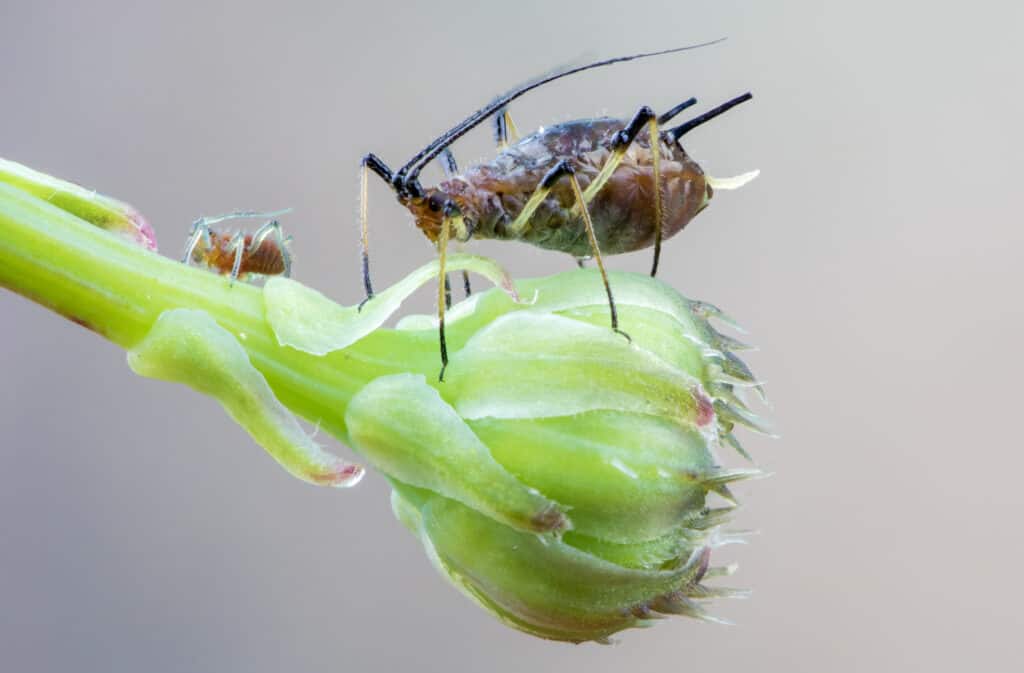
There are over 5,000 types of aphids in the world.
©Rainer Fuhrmann/Shutterstock.com
Natural Ways to Get Rid of Aphids
Here are 12 methods to get rid of aphids naturally without upsetting your yard’s ecosystem.
1. Use Your Hands
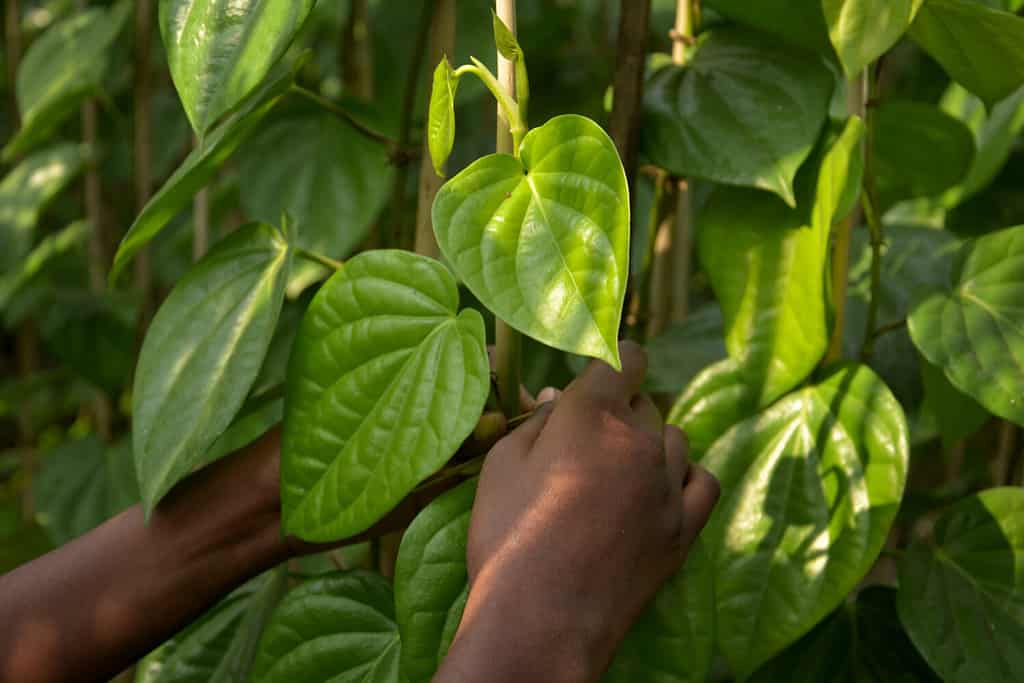
Run your fingers along plant stems to dislodge aphids
©Bapida/Shutterstock.com
Yes, really! Aphids are just soft-bodied bugs, and they can’t harm you.
Simply run your fingers up and down the stem and beneath leaves to crush clinging aphids into oblivion. If you prefer, use washing-up gloves to protect your skin. A little squirt of dish soap on your fingers helps lubricate and reduces potential damage to plant stems.
2. Blast With a Hosepipe
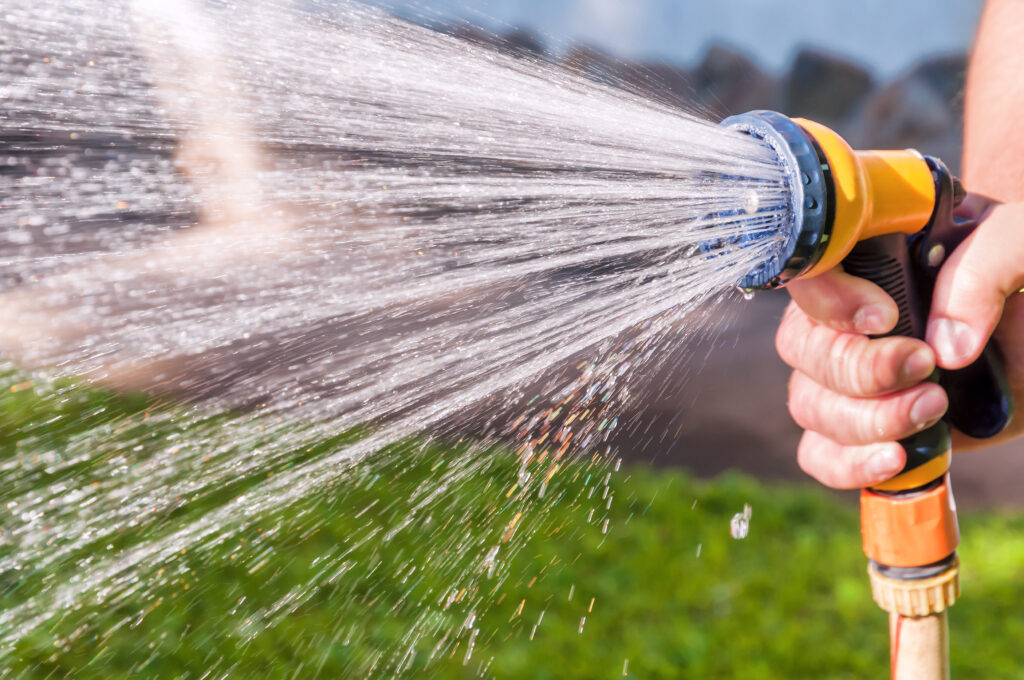
Remove aphids and honeydew with a hosepipe blast.
©iStock.com/vovashevchuk
The least expensive and pretty effective method to get rid of aphids naturally is a blast from the hosepipe.
Aim the nozzle at infected foliage and spray it in pulsating blasts. You’ll need to apply some pressure because aphids are adept at clinging on during rainfall. Once blasted free, wingless aphid species can’t climb back up.
Another benefit of a hosepipe blast is that it removes aphid poop, which is astonishingly known as “honeydew.” Honeydew attracts ants that farm aphids. More on that later.
Hosepipe-controlled aphid infestations require daily blasts until clear, which isn’t always feasible. Plus, in the case of water-sensitive flowers like roses, it can damage the blooms.
So, what else is there?
3. Apply Insecticidal Soap
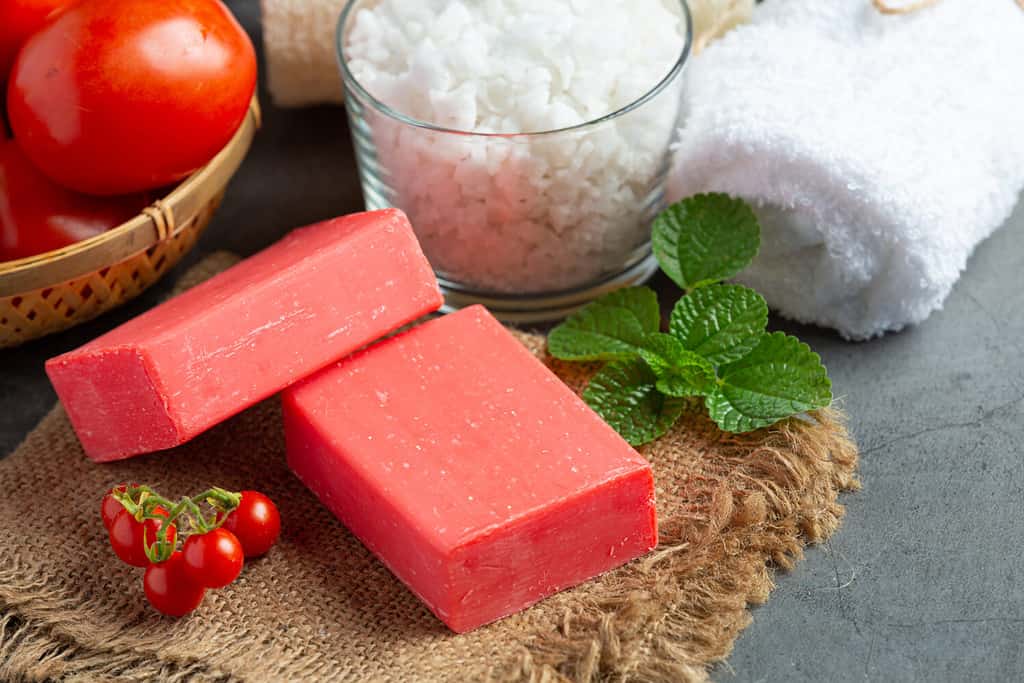
Insecticidal soap is a natural way to get rid of aphids.
©studio kacha/Shutterstock.com
Although insecticidal soap sounds like a chemical way to get rid of aphids, the ingredients are naturally based products like oils, citrus, and neem extracts.
These soaps work by suffocating the aphids with oil while neem or citrus break down their soft-shelled bodies. Once it’s dry, it stops working.
Insecticidal soap is a very effective way to get rid of aphids naturally, but big infestations will need regular treatments until the plant is clear.
4. Citrus Peel in Water
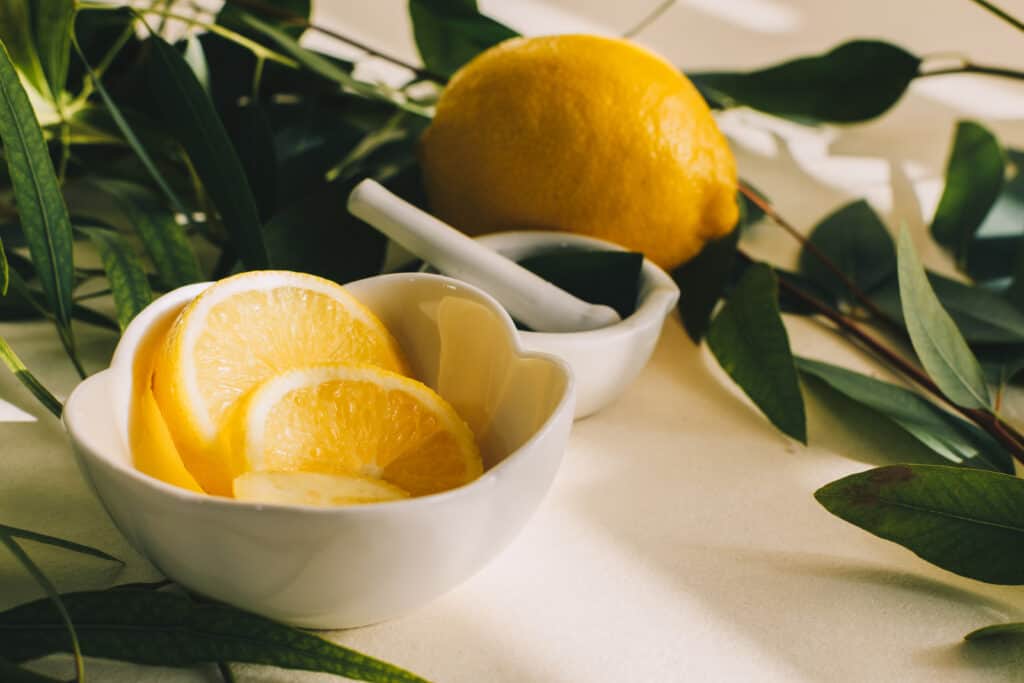
Water infused with citrus peel dries out aphids.
©RutySoft/Shutterstock.com
Aphids’ soft bodies are vulnerable to acidic extracts such as lime, lemon, or orange, so a citrussy infusion is a good way to get rid of aphids for good.
Soak the peel or rind in a spray bottle of water overnight (an old kitchen cleaner bottle is just fine) and liberally spray the aphids. You’ll need to repeat the treatment and wait a few days, but the citric acid will eventually work its magic.
5. Scotch Tape Aphids Off
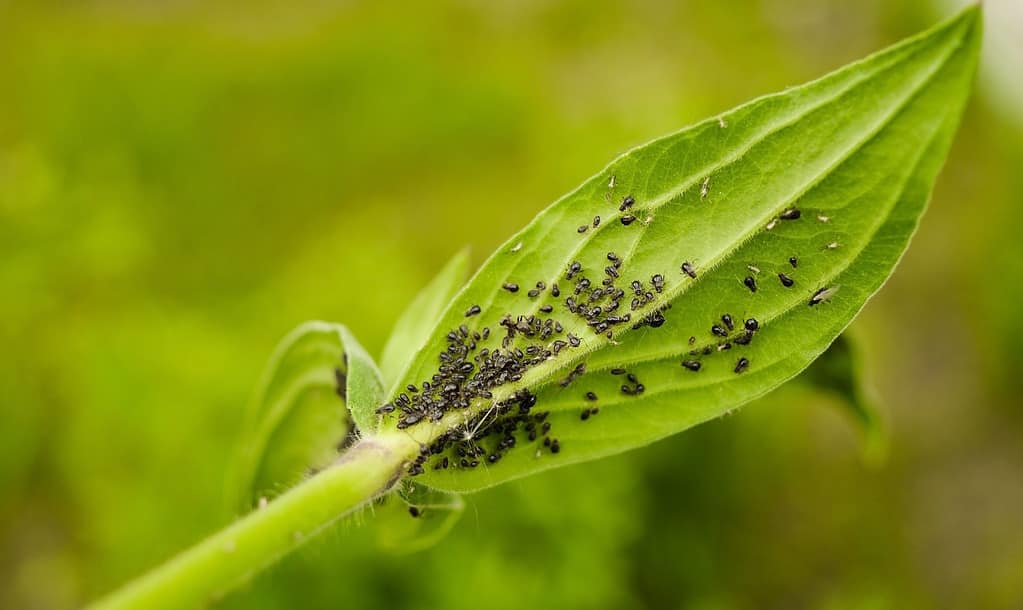
Scotch tape easily pulls aphids from delicate foliage.
©iStock.com/Irina Starikova
The inventive use of scotch tape is a great way to kill aphids naturally.
Don’t use hanging sticky traps because they kill birds and beneficial insects, too. Instead, grab a roll of double-sided sticky tape, stick it to your hand, and place it on aphids. Voila, the aphids come off without any harmful chemicals.
6. Diatomaceous Earth

Diatomaceous earth is sharp enough to cut aphids and dehydrate them over several days.
©FotoHelin/Shutterstock.com
Diatomaceous earth (DE) is the crumbled-up fossilized remains of diatom organisms. Chiefly found in oceans, lakes, and rivers, they contain silica that’s so small we can’t see it without a microscope.
Silica naturally has razor-sharp edges. It doesn’t hurt us or our cats and dogs, but for aphids, contact with diatomaceous earth is fatal. Its sharp edges cut into their soft bodies and dehydrate them.
Apply a fine layer of diatomaceous earth directly to aphid infestations and sprinkle some on the ground below to catch fallers. Reapply DE after rainfall, heavy dew, or if the weather is humid.
Just a note to always buy food grade, not pool or aquarium grade DE, because it’s high in crystalline silica, which isn’t good for us.
7. Attract Beneficial Insects

Ladybugs and their larvae are voracious aphid predators.
©iStock.com/Jan Rozehnal
Ladybugs, lacewings, damselbugs, hoverflies, and parasitic wasps just love all types of aphids. Encouraging these beneficial insects in your yard drastically reduces the aphid population safely and naturally.
Ladybugs are one of the aphids’ most prolific predators. If you find one in your yard, place it directly on an aphid infestation, and it’ll start munching straight away. Ladybug larvae also eat aphids.
Parasitic wasps don’t eat aphids straight off the bat. Instead, they lay eggs inside their bodies, and their larvae eat their way out. Aphids are so afraid of parasitic wasps that they often drop to the ground rather than face them. Ensure you have diatomaceous earth in place to catch them.
When a newly hatched parasitic wasp emerges from an aphid, it’s hardly any time before they lay their own eggs in the brood.
But how do you attract the beneficial insects that kill aphids? Grow more flowers, leave untidy areas, and stop using chemical pesticides.
Grow More Flowers
Pollinator-friendly flowers are a great way to provide habitation for omnivore ladybugs and nectar-eating parasitic wasps. Great plants include:
- Dill
- Cosmos
- Black-eyed susan
- Lantana
- Achillea
- Buddleia
- Lilac
- Milkweed
- Any native flowers or those with small clustered blooms
Leave the Yard a Little Untidy
Insects are prey to birds and spiders, so they seek out protective shelter. A leafy yard with old wood and large plant stems that hollow out over winter is an attractive home. Ladybugs like to hibernate in dried plant stalks.
When you clean up the yard for winter, leave plant stalks and some long grass in place so beneficial insects have a safe place to spend the long winter months. They’ll emerge in spring with a raging appetite for aphids!
8. Sacrificial Plants
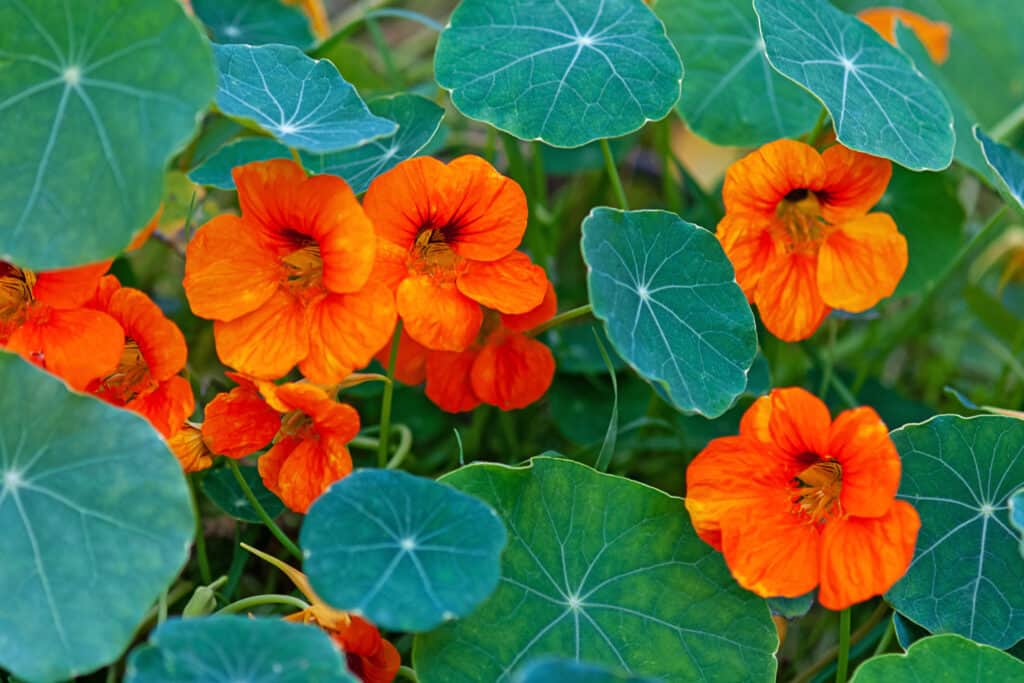
Nasturtiums distract aphids away from prized plants.
©iStock.com/Nadya So
Sometimes it’s easier to join them!
Sacrificial plants are those that you surrender to the enemy aphid to keep your prized plants safe. Some folks call it trap planting.
The idea is to plant a circle, or patch, of aphid-friendly plants near your crops as a decoy. When aphids arrive for the sacrificial plants, you leave them alone, concentrating your natural aphid weaponry like diatomaceous earth, citrus water, and ladybug worship on your beloved plants.
Aphids are not fussy. They head straight to the nearest suitable plants, so a circle around the precious planting works well. Create a perimeter that blooms before the plants you love. Nasturtiums are virtually perfect for this protective role. Aphids love them, they attract pollinators, and they look handsome.
9. Fight the Ant Farmers
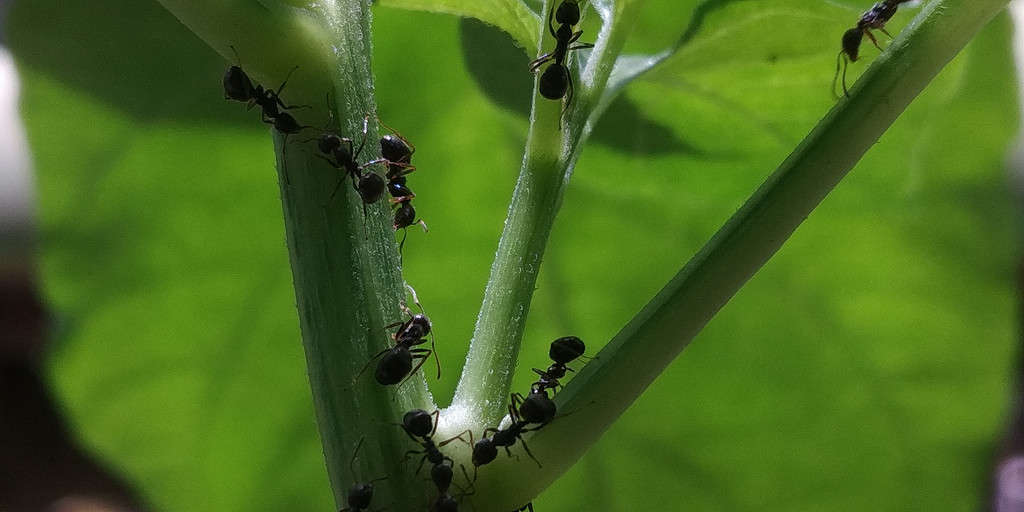
Ants farm aphids and consume their honeydew (aphid poop).
©iStock.com/Rahmat M Pandi
Ants don’t harm plants in the ways aphids do, but ants farm aphids so they can feast on their honeydew. Ants love honeydew so much that they guard aphid colonies from murdering predators. Research indicates that a substance on ants’ feet may even tranquilize aphids, and some experts note ants biting off aphids’ wings so they can’t escape the farm.
Without their ant guardians, aphids are vulnerable to predation, so getting rid of the ants is a natural way to get rid of aphids.
One of the best ways is applying a thick layer of grease (such as Vaseline) to plant stems, which prevents ants from climbing up. Also, because ants build homes in dry spaces, they will move on if their homes are flooded regularly.
10. Companion Planting

Marigolds deter aphids but attract beneficial insects like ladybugs and parasitic wasps.
©FunFamilyRu/Shutterstock.com
Companion planting helps boost natural defenses and naturally gets rid of aphids.
Plant scented marigolds, catmint, peppermint, chives, dill, fennel, and other highly scented plants to deter aphids. Best of all, you can harvest herbs, and your feline friend will adore the catnip!
11. Cut Down on Fertilizer

Aphids love sappy green growth; cut down on fertilizer to minimize it.
©A-Z-Animals.com/Larissa Smith
Aphid preference is a juicy, sap-filled new leaf. Plants produce more of these when excess fertilizer encourages fresh growth.
Be sure to follow fertilizer packet instructions, and don’t over-fertilize your plants. Sappy new growth is a megaphone to aphids in the district!
12. Look After Your Plants
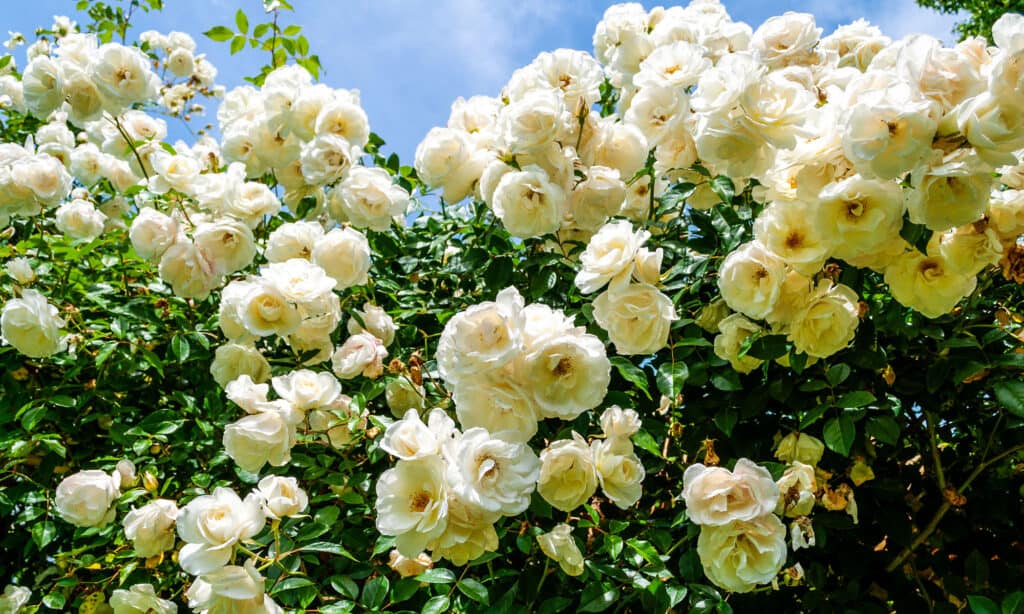
Healthy plants like this Iceberg rose is much less likely to host aphids.
©GAT0/Shutterstock.com
Stressed, dry plants are defenseless against aphid invasion, but healthy, strong plants can put up more of a fight with their natural chemical production.
In periods of drought, ensure plants get enough water, and if they just don’t suit the soil, roses dislike chalk. For example, move them to more suitable areas where they can thrive and naturally fight pests like aphids.
Natural Methods That Don’t Work
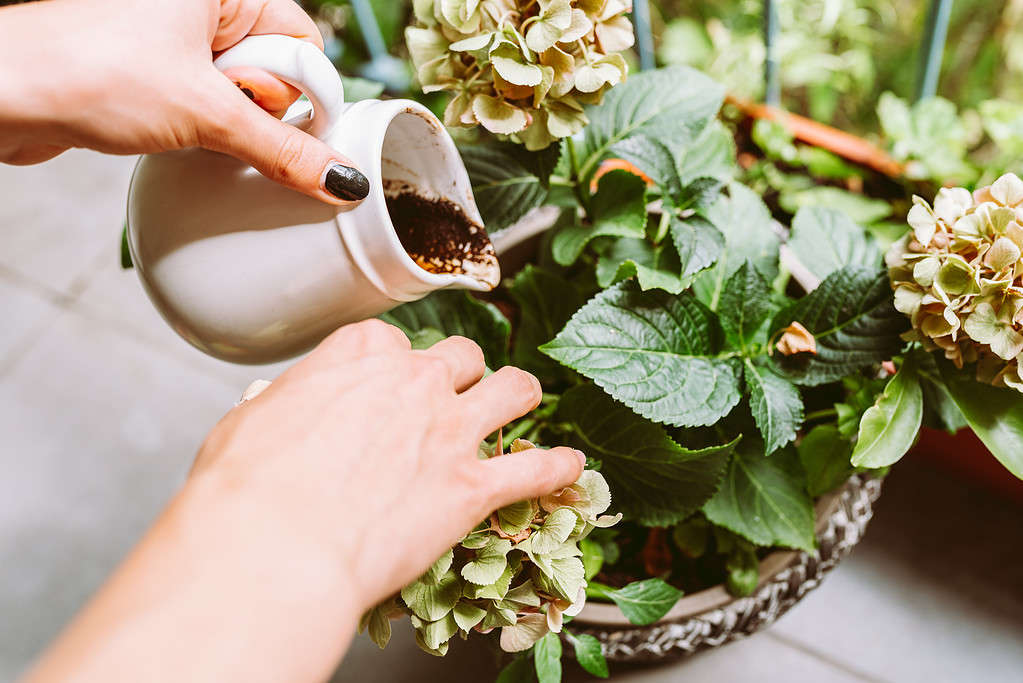
Coffee grounds do not deter aphids but may attract rats and raccoons.
©Larisa Stefanuyk/iStock via Getty Images
Some methods suggested as a natural way to get rid of aphids just don’t work on the flying menace.
These include coffee grounds, banana peels, or eggshells. In fact, they could encourage mice, rats, and raccoons, which will raid your flowers and veggies too.
Natural methods to get rid of aphids are pretty effective overall. Still, for the best outcome, you need to keep on top of the situation, regularly check for aphids, and reapply natural remedies frequently. Although it sounds like a hassle, it’s worth it for a chemical and pesticide-free yard full of beneficial insects like bees, dragonflies, and butterflies.
Summary of 12 Methods for Getting Rid of Aphids Naturally
| Number | Method |
|---|---|
| 1 | Use Your Hands |
| 2 | Blast With a Hosepipe |
| 3 | Apply Insecticidal Soap |
| 4 | Citrus Peel in Water |
| 5 | Scotch Tape Aphids Off |
| 6 | Diatomaceous Earth |
| 7 | Attract Beneficial Insects |
| 8 | Sacrificial Plants |
| 9 | Fight the Ant Farmers |
| 10 | Companion Planting |
| 11 | Cut Down on Fertilizer |
| 12 | Look After Your Plants |
The photo featured at the top of this post is © Floki/Shutterstock.com
Thank you for reading! Have some feedback for us? Contact the AZ Animals editorial team.







